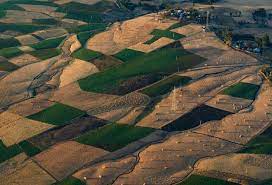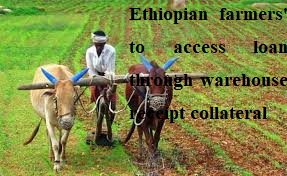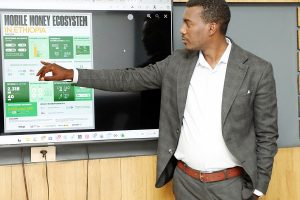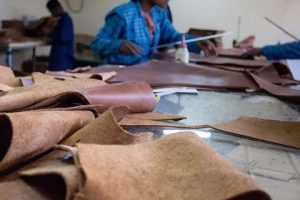
According to the Ethiopian Electric Power (EEP), Ethiopia has abundant renewable energy resources and has the potential to generate over 60,000 megawatts (MW) of electric power from hydroelectric, wind, solar and geothermal sources. As a result of Ethiopia’s rapid economic growth over the previous decade, demand for electricity has been steadily increasing.
Despite Ethiopia’s energy potential, the country is experiencing energy shortages and load shedding as it struggles to serve a population of over 120 million people and meet growing electricity demand that is forecast to grow by approximately 30% per year. With some of the projects are still under construction, the country currently has approximately 4,500 MW of installed generation capacity. There is a plan to exponentially increase the power generation capacity to 17,000 MW in 10 years.
The country launched the building of Climate Resilient Green Economy in 2007 which emphasizes the development of renewable energy sources to protect the environment from pollution.
In fact, unlike other advanced countries, Ethiopia relied on renewable energy sources such as hydropower and exploring and exploiting of these resources has been continued. Only in the last two decades more than seven hydropower dams had been constructed and began power generation and increased the nation’s power stock capacity.
The generated power in addition to supplying energy to the grid, it enabled the nation to garner foreign currency from export. Currently, Ethiopia exports electricity to Djibouti, Kenya and Sudan. There is a plan to increase power exports to Djibouti due to a growing demand in the country.
Menilik Getahun, the head of sales and customer management, recently announced that over 102 million USD was obtained in the last fiscal year from electric export to the neighboring countries. He further said that the mentioned amount of money was obtained from export to Djibouti, Sudan and Kenya. Djibouti is one of the leading importers of Ethiopia’s electric power energy.
Ethiopia secured 41 million Dollars from Djibouti in the mentioned period and obtained 34 million Dollars from Sudan. In addition to these it was reported that Ethiopia earned 24 million Dollars from electric export to Kenya.
According to Menilik, it was aspired to obtain 143 million USD from power export to the mentioned countries in the last budget year and achieved 71% of what was planned to obtain.
He also said that the power sold to Kenya exceeded the target and the ongoing political impasse in Sudan deducted the revenue by 34% compared to the previous year.
To mitigate the overdue of payment due to the civil war in Sudan, EEP is working closely with the Ethiopian Ministry of Foreign Affairs and the Sudanese Embassy in Addis Ababa.
In the last fiscal year Ethiopia generated over 17414 Giga watt of electric power and supplied to local and international market.
Ethiopia Electric Power (EEP) is in charge of maintaining more than 14 hydropower and three wind power plants throughout the country. EEP will focus on management of the existing power generation plants, substations and transmission lines, with all new power generation projects to be developed through Public Private Partnerships (PPPs) and Independent Power Producers (IPPs).
Approximately, 90% of the installed generation capacity is from hydropower, while the remaining eight percent and two percent are from wind and geothermal sources respectively. The hydropower dominated energy system is severely vulnerable to drought, and the Government of Ethiopia (GOE) is now working to diversify the generation source mixing with other sources such as solar, wind, and geothermal that is a more climate-resilient power system.
Currently, all hydropower dams are producing below their stated capacity. An assessment has been conducted to propose rehabilitation and optimization of their output.
The Grand Ethiopia Renaissance Dam (GERD) or Abbay Dam, with a projected installed capacity of 5,150 MW and under construction by the Ethiopian Government is eying its completion soon.
Water and Energy Minister Habtamu Itefa (PhD & Eng.) said that work is being done to increase the turbines’ number to 7 that generate power at the Abay Dam.
In addition to the two turbines that started generating power in 2022, five turbines are being put into operation in the current 2023/24 fiscal year. He said that when the five turbines come into operation, Ethiopia will increase its current power supply of 4,818 megawatts.
He said that compared to the two turbines that have been put into operation, the five turbines that will be put into operation this year will generate equivalent to or more than the average of 1,180 megawatts of Beles, Gilgel Gibe I and II and Tekeze power stations.
The Government of Ethiopia is also constructing Koysha Hydo Power dam on the Omo River, which will be the second largest in Ethiopia next to Abbay Dam. The total investment cost for this project is 2.5 billion Euro. The expected time frame to finalize this project is three years with a capacity 2,170 MW of power. Currently 39% of the project is completed.
Ethiopia aspires to change its agricultural led economy in to the industry led economy and to that end, the government introduced investment laws to create enabling environment both to the local and foreign investors. It constructed industrial parks in various parts of the country. So far, the number of industrial parks reached to 13 and many manufacturing industries have been operational.
The expansion of manufacturing industry without the availability of sufficient electric energy is unthinkable.
The industry sector plays pivotal role in the economy. It creates job opportunity to thousands, serves to enhance creativity and import substitution, boosts export, create linkage with the agriculture sector and supply products to local markets.
To change the agricultural led economy in to the industry led economy, there must be bringing structural change. It is obvious that almost 85% of the labor force is stranded in the rural part of the country engaged in the agricultural sector.
Attaining structural change needs shifting the rural labor force in to the non -farming sector such as manufacturing industry which are currently flourishing in various parts of the country. To attain these objectives, the expansion of electric power generation plays key role.
The hydropower generation is highly vulnerable to climate change and variation. When shortage of rain occurs due to extreme weather condition, the dam’s power generation capacity will be decline up to 40%.
Therefore, to mitigate the problem, strengthening green legacy and water-shade management through tree plantation is essential. In addition to containing desertification, the green legacy enables storing underground water which is the source of river water. In line with this effort, exploiting other renewable energy sources mentioned above should be taken as a way out.
Exporting energy sources to the neighboring countries and beyond has great importance. It shores up shortage of hard currency in which the nation is suffering for decades which brings some kind of remedy for the macro -economic imbalance.
Ethiopia has been indulged in negative trade balances in which it imports more capital and commodity goods than it exports.
According to the report of National Bank of Ethiopia, the country imports goods worth 15 billion Dollars annually while it exports commodities and services worth not more than three billion Dollars. Hence, exporting energy can play crucial role in balancing the trade deficit.
In addition to power generation, exploiting renewable energy plays pivotal role in paving the way for building green economy. Currently, Ethiopia spends four billion Dollars to import the petrochemical based energy source which has hazardous effect on the environment.
Generating renewable energy enables the country garner hard currency that it spends for the importation in addition to substituting the imported carbon based energy. It has also a strategic importance as Ethiopia is located in the horn of Africa.
BY ABEBE WOLDEGIORGIS
THE ETHIOPIAN HERALD SUNDAY EDITION 17 SEPTEMBER 2023





